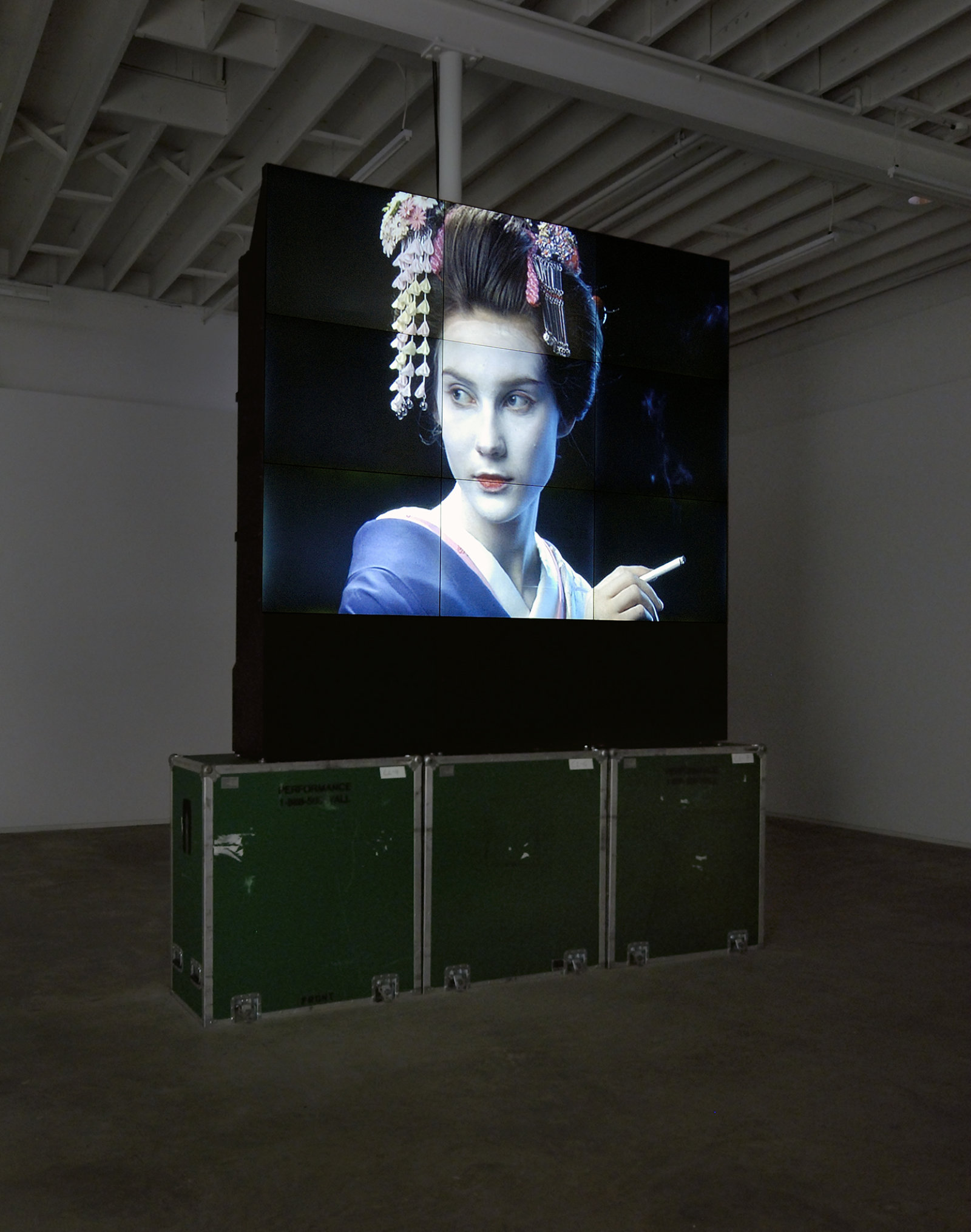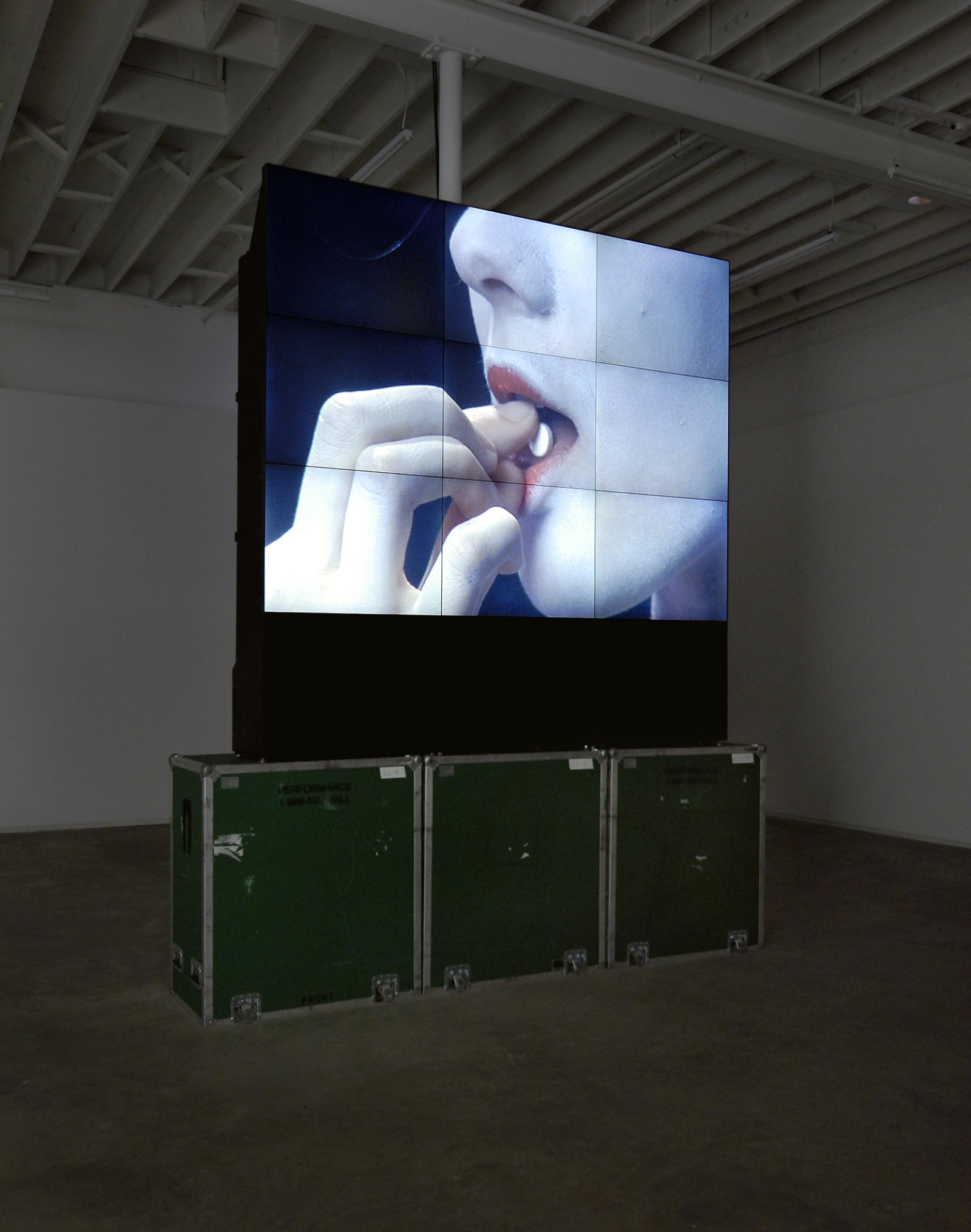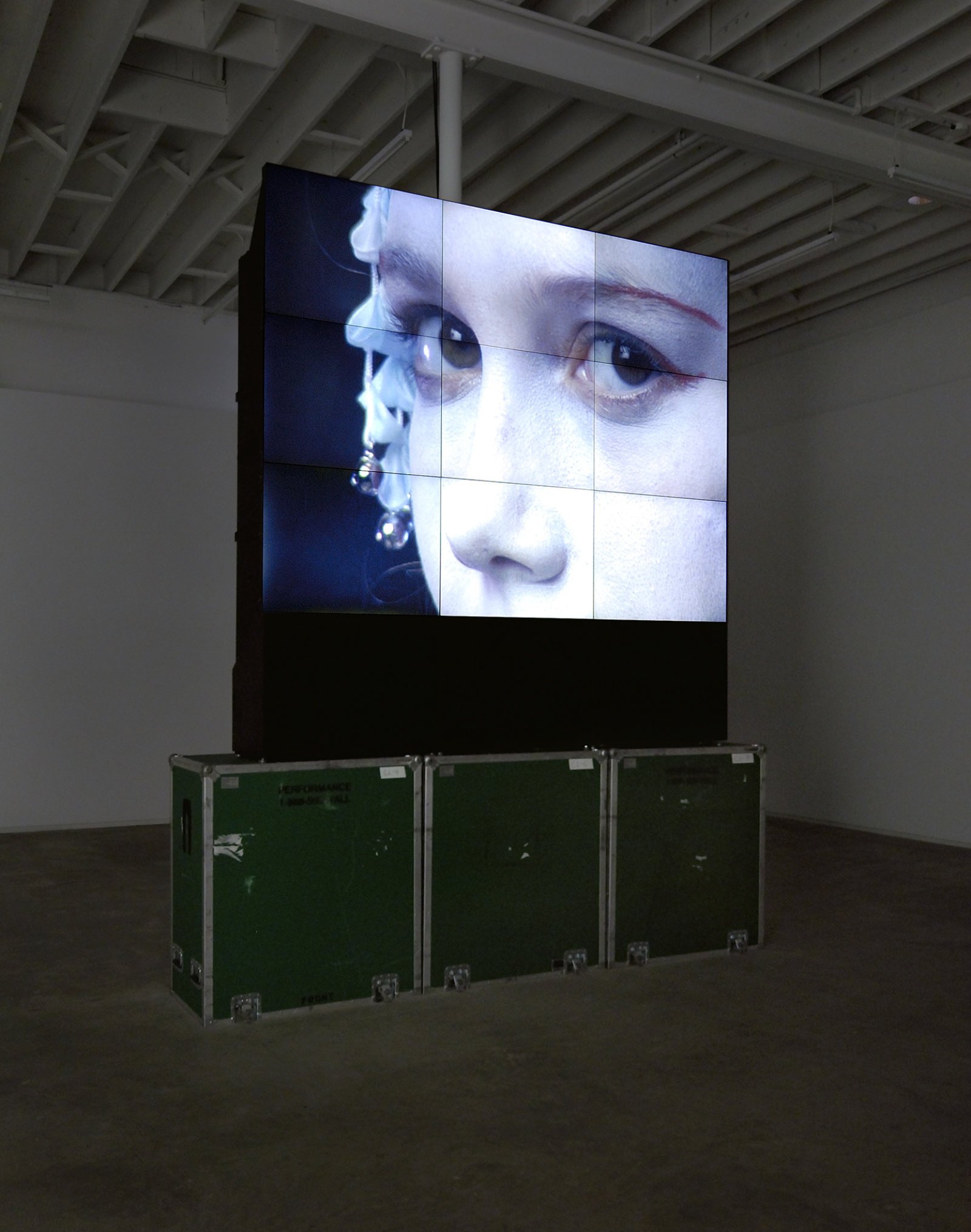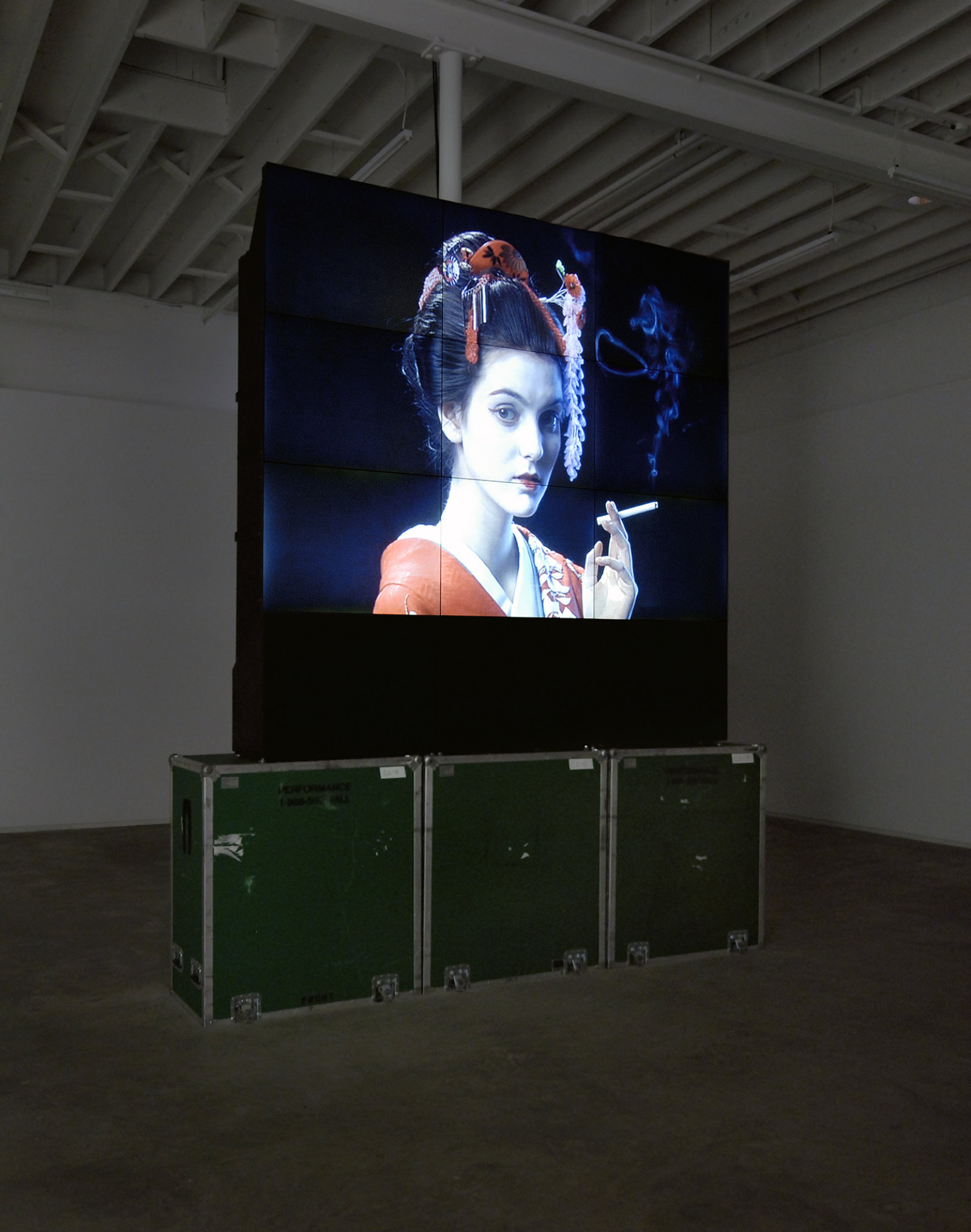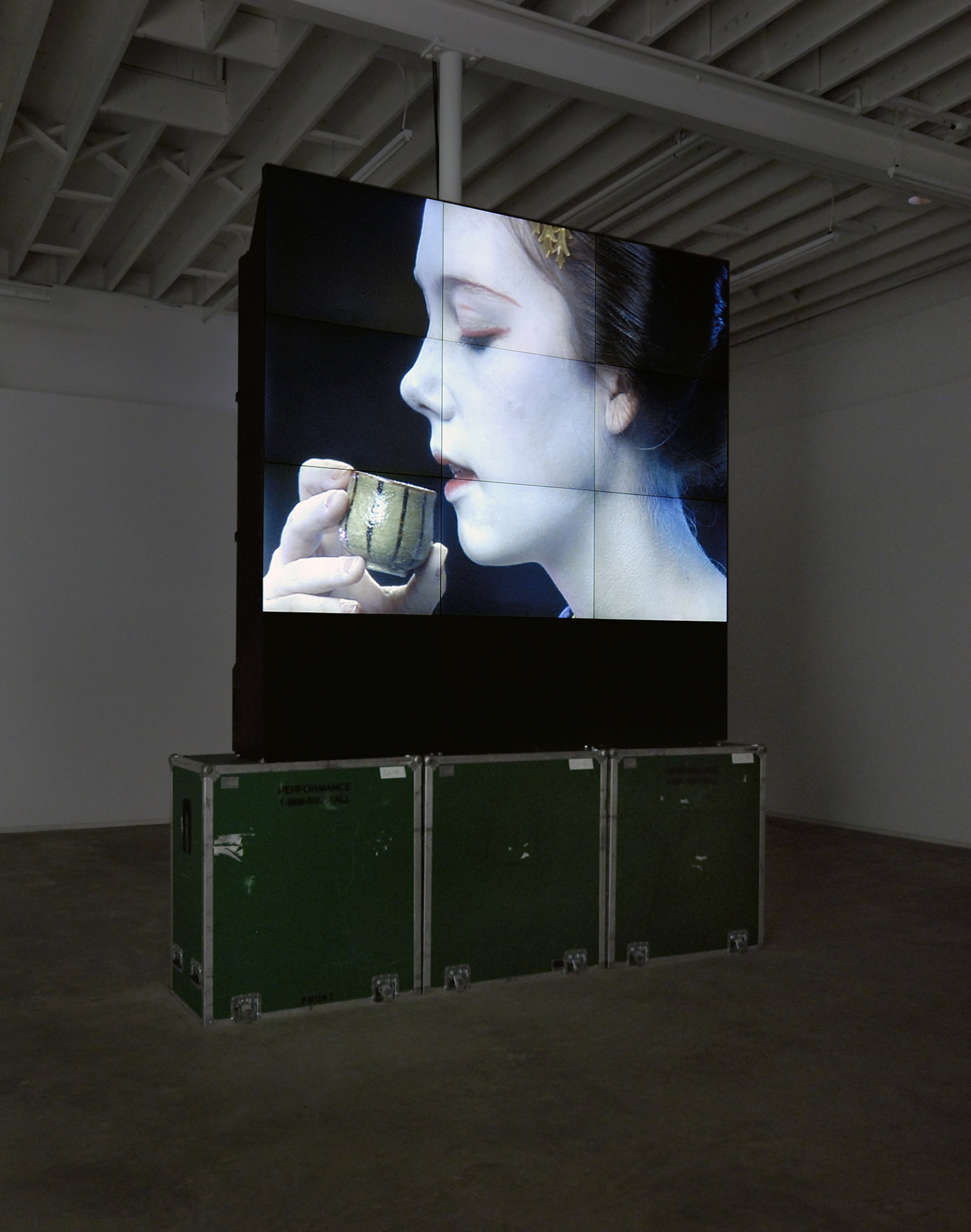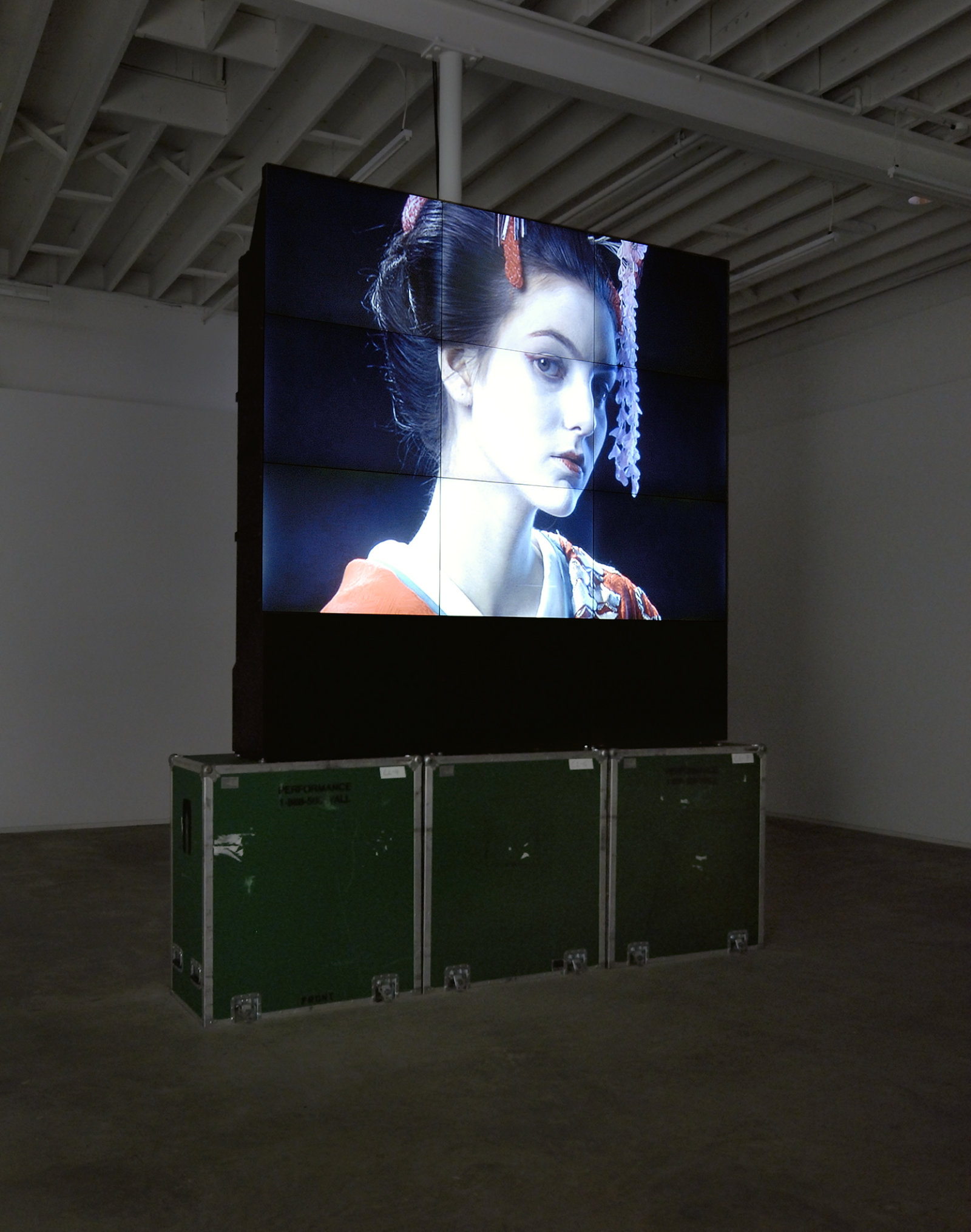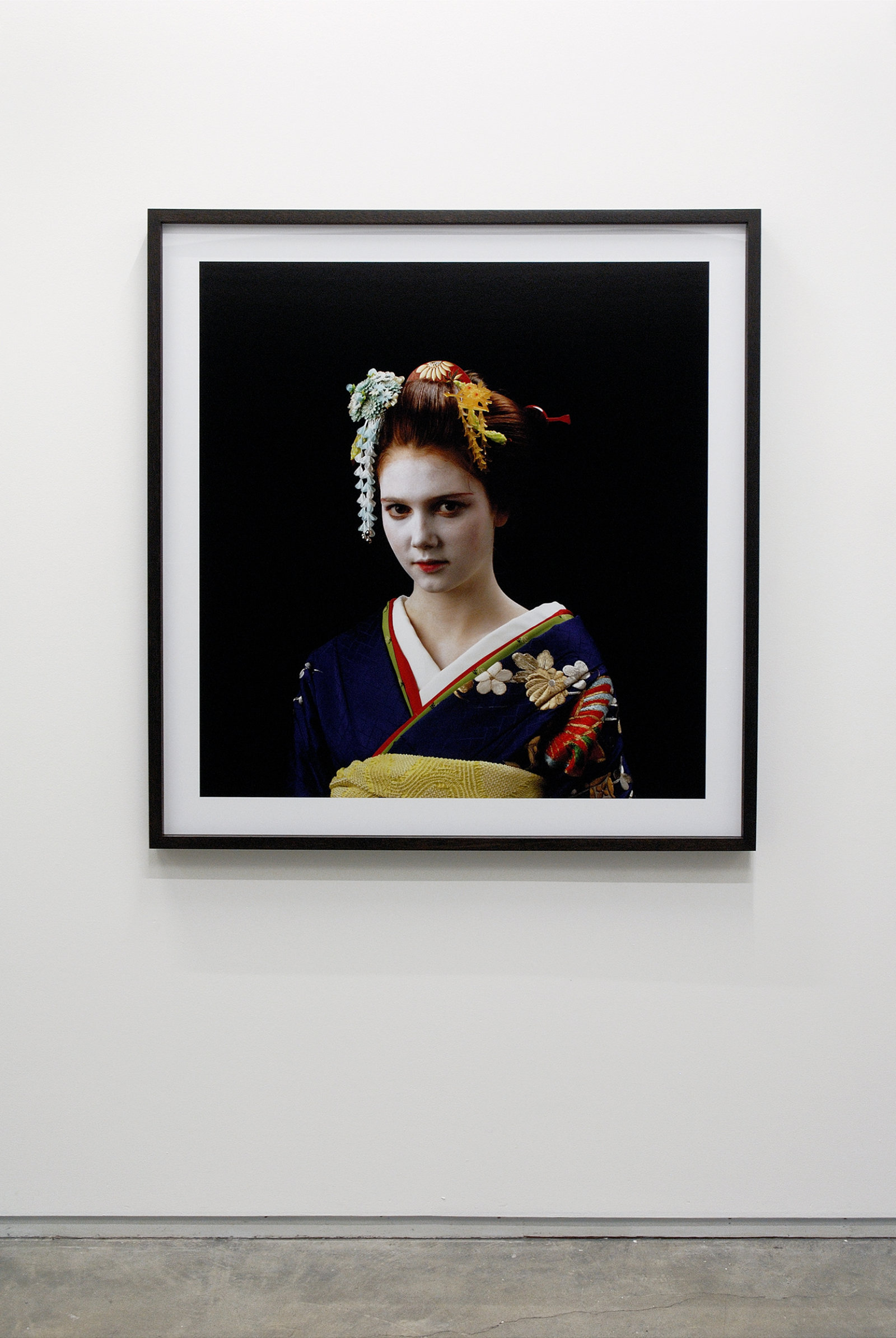Ron Terada – MAY 23–JUNE 28, 2008
Ron Terada
May 23–June 28, 2008
Catriona Jeffries
Catriona Jeffries is pleased to announce the forthcoming exhibition of new work by Ron Terada. Based in Vancouver, Terada has often simultaneously drawn from and subverted his native city as a means for examining constructs of regional and cultural identity in the urban context. Terada persistently exposes the language of signs that pervade our modern condition, claiming the city and sites of communication as his ready-made. In this exhibition Terada integrates a variety of media to further complicate and obstruct our reading of these signs.
In his new work Terada maintains a connection to his 2005 sign work currently installed on the exterior of the gallery that warns us to Stay Away from Lonely Places. With allusions to the 1982 film Bladerunner in which the city is the main character, Terada continues to investigate the anxiety of place, site and non-site. In an ambitious video installation he conflates the urban environment and the space of the gallery, playing with the vernacular of the contemporary art object and the large-scale advertising billboard.
In the video, three young Caucasian girls dressed as maikos (apprentice geishas) perform excess through the consumption (or near consumption) of alcohol, cigarettes and pills. Mixing the aesthetic of slick commercial advertising and 1980s kitsch, in a constant play between past and present, Terada’s installation and new large format photographic works which depict each girl posed, speak to the excesses of consumer culture and the excess of accelerated development in the city. Within this new body of work Terada in turn probes questions of “looking” and embeds references to the history of exoticism and orientalism within the history of Western art.
Terada has also created a new neon work that references Canadian hockey player Todd Bertuzzi’s infamous and sinister comment "It is what it is," which he made in response to his excessive violence during a game. In Terada’s inversion, "It was what it was," he marks a contradictory sense of loss and detachment from the past and further enacts the displacement of his cultural subjects. Through the dematerialization of the object and the image, Terada nods to conceptual practices and continues to take up what has been described as "the most subtle and nuanced ripostes to Walter Benjamin’s lamentation of the loss of art’s aura in the face of mechanical reproduction."
Documentation by SITE Photography.
